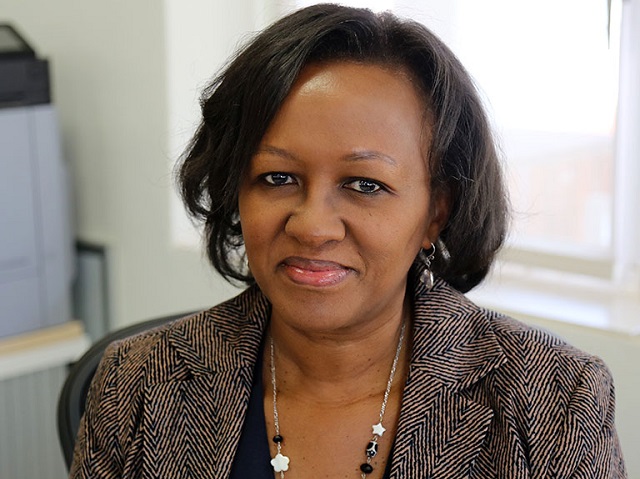
Kampala, Uganda | THE INDEPENDENT | The World Bank has put the per capita income of Uganda at 850 dollars for the financial year end 2022, with the economy growing at an estimated 3.7 percent.
According to the Bank, this average income by a Ugandan is far below the lower-middle-income threshold of 1,045 dollars that was stated by President Yoweri Museveni in his state of the Nation Address on June 7.
The President noted that the economy had been slowed down by multiple disasters including drought, floods, locusts, Covid-19, and global inflation, but nevertheless grew to the desired figures.
“In spite of all these, the Ugandan economy, by the budget time in the next few days, will be standing at US$ 45.7billion by the exchange rate method and at USD 131.6 billion by the PPP method. This means that the GDP per capita is now $1046. You remember, the entrance point for the lower-middle-income status, is USD 1036. We have now passed that figure. Congratulations,” he said.
He added that to be declared a middle-income country, Uganda will need to sustain this for two to three consecutive years. “I am confident, we shall over-perform, in achieving that,” Museveni stated.
However, the World Bank estimated that despite the economic growth, the population also grew at about the same rate, leaving the per capita income stagnant.
“Overall growth for FY22 is estimated at 3.7 percent – below the pre-COVID-19 projections of over 6 percent, leaving Uganda’s per capita income estimated at about US$850, well below lower-middle-income threshold of US$1,045 per person,” said the World Bank’s 19th State of the Economy Update.
The global lender also doubts that Uganda will attain the middle-income status in the near future unless the economy grows a little faster than the current rate, which is slightly lower than that projected in the December 2021 update. Yet, there are multiple challenges that might affect faster growth.
Mukami Kariuki, World Bank Country Manager for Uganda said that it is crucial for the government to adopt targeted interventions to support the vulnerable while managing debt and rising inflation.
She said for example, oil and gas can help the economy grow, but that this will only be when the country remains diversified, especially by not losing focus on the agriculture sector.
“Policymakers face new uncertainties and challenges that must be managed cautiously, given the tradeoffs between rising inflation and supporting the recovery. With the lower growth than the pre-pandemic projections, the gap between the actual per capita income and the NDP III target has widened and the time for Uganda to reach the lower-middle-income target elongated,” says the report.
According to their conclusions, Uganda would have attained lower-middle-income status already if the strong growth rates of (between 6 and 10 percent) posted between 2001 and 2011 had been maintained.
At that time, the gap to lower middle income reduced to just 17 percent from 76 percent recorded in 1994, but since 2011, it has been between 19 and 26 percent as economic growth slowed down while population growth rates remain high.
Kariuki says for as long as the majority of Ugandans are outside the money economy. She says even if the GDP is growing, it should grow fast enough to cater to the growing population, especially in terms of public service delivery.
In measuring the income classes of countries, the World Bank uses the Gross National Income, GNI, which includes incomes earned by residents both within and outside the country.
This is then divided by the number of all the people to get the per capita income.
Juma Wasswa Balunywa, the Principle Makerere University Business School says the country has enormous opportunities to get the growth rates it needs, adding that just increasing production would be adequate.
The real gross domestic product grew by 4.3 percent in the first half of 2022 supported by a strong and speedy recovery of the service sector, following the full reopening of the economy.
The Bank expects a 5.1 percent growth rate next year, 0.5 percentage points below the December 2021 forecast, increasing to about 6 percent in the subsequent year.
“Rising commodity prices and the overall increase in the cost of living pose new risks to livelihoods, that had just begun recovering from the effects of COVID-19.
These and other shocks are threatening to stall socio-economic transformation, thus increasing the likelihood of the people falling deeper into poverty,” said Kariuki.
*****
URN
 The Independent Uganda: You get the Truth we Pay the Price
The Independent Uganda: You get the Truth we Pay the Price




The main disagreement is about the population size. The world bank says the population of Uganda is bigger than the government of Uganda claims.
His Excellency is contradicted by the World Bank
‘The global lender also doubts that Uganda will attain the middle-income status in the near future unless the economy grows a little faster than the current rate, which is slightly lower than that projected in the December 2021 update. Yet, there are multiple challenges that might affect faster growth’. Should the president have taken advice from the global lender rather than from his officials who appear to have misled him? There has always been credibility problems with the Uganda data and stats which is embarrassing as our Swahili speaking neighbours match into the ‘verified’ middle income status.
Government’s figures are based on GDP, which is an estimate of the total value of goods and services produced within a country during a set period, usually one year. The World Bank’s figures are based on 2021 calculations, and are based on GNI, which estimates the total amount of money earned by a country’s people and businesses. It includes GDP and income from abroad, for instance from Ugandans working in the diaspora.
Money is in the hands of few individuals who may be investing their money outside the country. Secondly the population is growing rapidly but there is limited or no economic empowerment. Thirdly we are faced with higher level of advanced and deep rooted corruption in all corners of government ministries sectors and departments starting from the top to bottom.